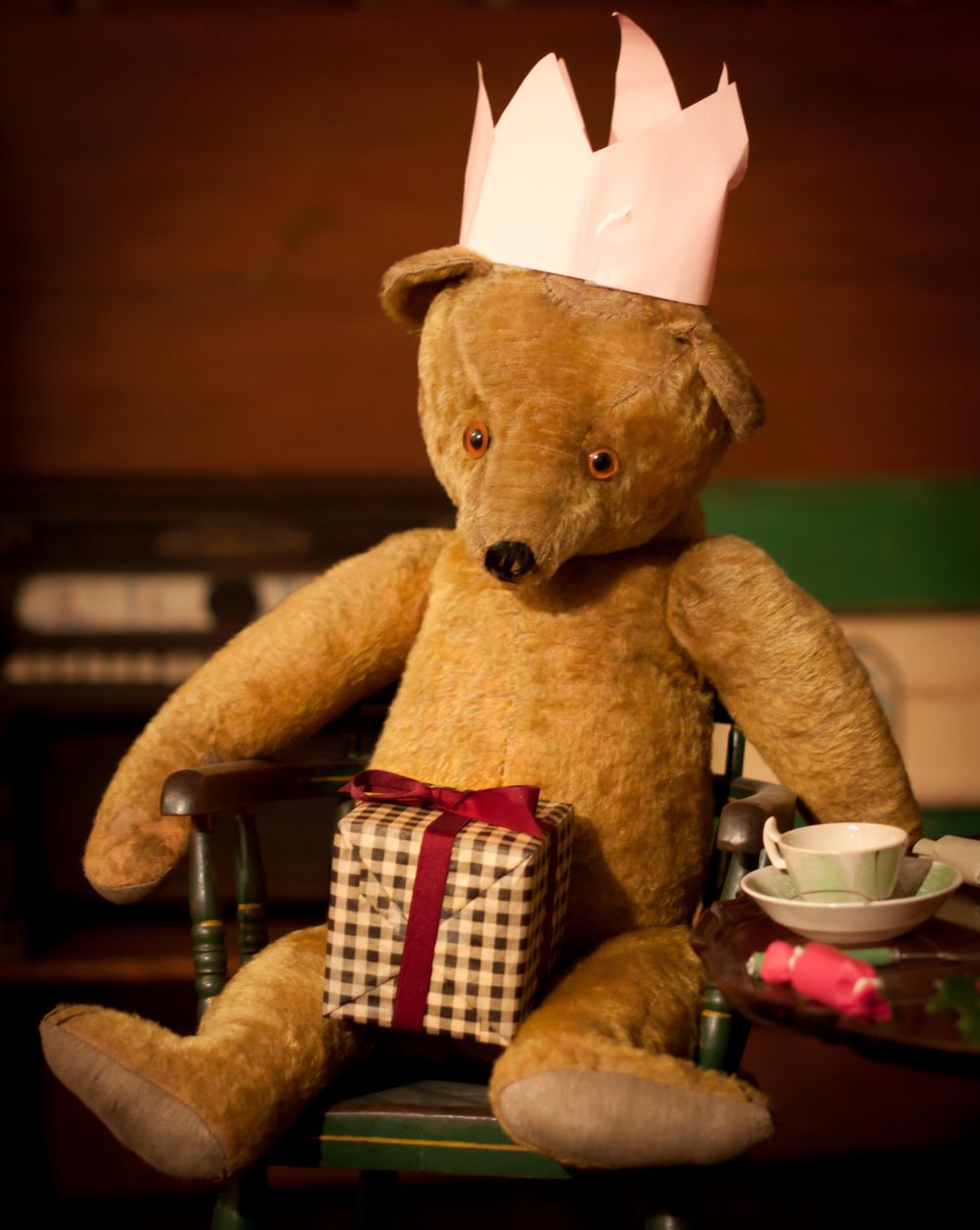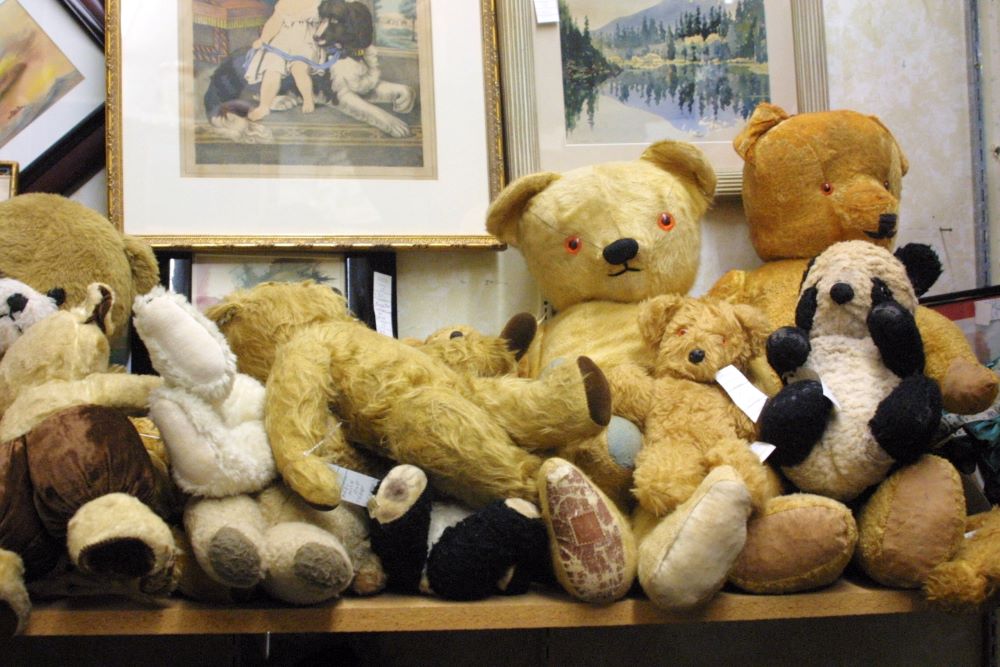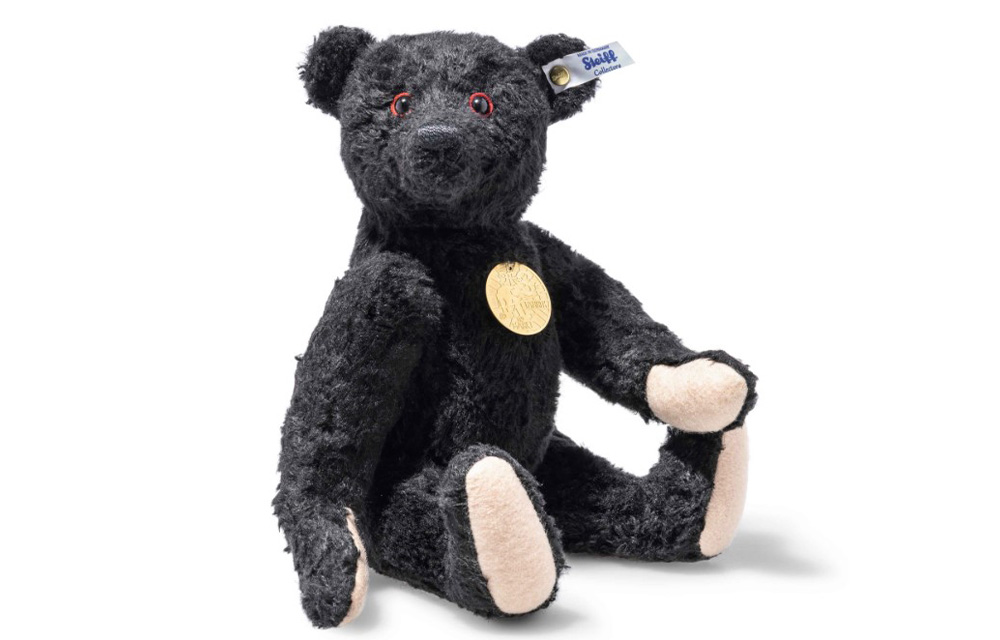In the world of collectible toys, few things are as prized and sought after as antique mohair teddy bears. These plush companions have captivated the hearts of collectors and enthusiasts for over a century. But what makes these teddy bears so special? Why do they hold such a revered place in the hearts of collectors? Let’s find out why these timeless treasures are an absolute must-have for any serious collection.
The Historical Significance of Antique Mohair Teddy Bears
To really understand why antique mohair teddy bears are so valuable, it’s important to know a bit about their history. The story of the teddy bear begins in the early 1900s, with the now-famous tale of President Theodore Roosevelt refusing to shoot a bear during a hunting trip. This event inspired toy makers to create the first teddy bears, and by 1902, mohair—a fabric made from the hair of the Angora goat—became the material of choice for high-quality teddy bears.
These early mohair teddy bears were not just toys; they were symbols of comfort and companionship during a time when industrialization and war were reshaping the world. Their presence in homes provided solace, making them more than just objects—they became a part of family histories, passed down through generations.
Unique Features of Antique Mohair Teddy Bears
One big reason antique mohair teddy bears are so prized is because of their unique features. Unlike today’s mass-produced toys, these bears were often handmade, giving each one its own special personality and charm.
Material and Craftsmanship: Mohair was used because it’s durable and looks a lot like real animal fur. Its softness and shine made these bears feel luxurious back in the day.
Distinctive Characteristics: When you look closely at an antique mohair teddy bear, you’ll see details like hand-stitched noses, movable limbs, and glass eyes—showing the careful work that went into making them. These touches give the bears a lifelike quality that modern versions often miss.
Aging Process: Over time, mohair develops a unique look as it ages. The slight fading, the worn spots, and even old repairs add character and depth to each bear’s story. This aging process turns these bears from simple toys into beloved keepsakes.

The Value of Antique Mohair Teddy Bears in the Collectible Market
In the world of collectibles, antique mohair teddy bears have steadily gained value, making them a smart choice for collectors. As these bears become rarer over time, their demand keeps growing.
Market Demand: Collectors are always searching for authentic antique mohair teddy bears, which has driven up prices at auctions and specialty shops. Each bear’s uniqueness and historical significance make them highly sought after in the market.
Appreciation in Value: Many of these bears have increased in value over the years. Bears that were once just children’s toys can now sell for thousands of dollars, especially if they’re in good condition or have a well-known history. For instance, Steiff bears, famous for their quality and craftsmanship, have sold for record prices at auctions, showing just how valuable they can be.
Case Studies: A great example is the Steiff “Teddy Girl” bear, which sold for over £110,000 at an auction in 1994. This bear had a detailed history, which added to its value. Stories like this show that these bears are not just toys—they’re important pieces of cultural history.
What Makes Antique Mohair Teddy Bears a Must-Have for Collectors
What is it about antique mohair teddy bears that make them so essential for collectors?
Rarity and Exclusivity: Genuine antique mohair teddy bears are hard to come by. Over the years, many have been lost, damaged, or simply worn out from being loved. Finding one in good condition is becoming increasingly rare, which only adds to their value. Owning one of these bears isn’t just about having a collectible; it’s about possessing a unique piece of history. It’s a symbol of exclusivity and a sign of a collector’s commitment to preserving these charming pieces of the past.
Emotional Connection: Beyond their monetary value, these bears evoke a profound emotional connection. For many, they represent a tangible link to the past—a time of innocence, simplicity, and comfort. These bears often carry with them the memories of the children who once cherished them, the homes they occupied, and the eras they lived through. This emotional resonance is a significant factor in their appeal, as collectors often seek to recapture a piece of their own childhood or that of previous generations. The stories these bears could tell, if only they could speak, are what make them so much more than just toys—they are storytellers of personal and shared history.
Legacy and Heritage: Owning an antique mohair teddy bear is like holding a piece of history in your hands. These bears reflect the time in which they were made, from the materials used to the style of their clothing. Passing one down through the family isn’t just about handing over a valuable item; it’s about preserving a piece of history and keeping a tradition alive. When a bear is cherished by multiple generations, it adds even more meaning, turning it into an irreplaceable family treasure.
Investment Potential: Antique mohair teddy bears aren’t just sentimental—they’re also a smart investment. The value of well-preserved bears has consistently gone up over time, especially those made by well-known brands like Steiff. Collectors see these bears as investments that offer both emotional and financial rewards. Bears with special features, significant history, or well-documented backgrounds are especially valuable.
Craftsmanship and Artistry: The craftsmanship of these antique bears is another reason they’re so prized. Unlike today’s mass-produced toys, many of these bears were handmade with great attention to detail. From their carefully stitched noses to their hand-painted eyes, every part of these bears shows the skill and artistry of their makers. The use of mohair, a luxurious and durable material, adds to their appeal. Collectors value not just the bears themselves but the craftsmanship that went into making them, seeing them as works of art rather than just toys.

How to Start or Expand Your Collection of Antique Mohair Teddy Bears
If you’re convinced that antique mohair teddy bears deserve a place in your collection, here’s how you can start or expand your collection:
Finding Authentic Antique Mohair Bears: The best places to find authentic antique mohair teddy bears include reputable auctions, antique shops, and specialized online marketplaces.
Evaluating Condition and Authenticity: When purchasing an antique mohair teddy bear, carefully examine its condition and authenticity. Look for signs of genuine mohair, such as the feel and sheen of the fabric, and check for original features like glass eyes and jointed limbs. Be cautious of modern reproductions, which can sometimes be passed off as originals.
Building a Collection: Start by acquiring a few high-quality pieces and gradually expand your collection. Focus on bears that speak to you personally, whether due to their history, craftsmanship, or appearance. Joining collector communities or attending teddy bear shows can also provide valuable insights and connections.
Follow our detailed guide about where to buy collectible teddy bears.
Conclusion
Antique mohair teddy bears are more than just collectibles—they are cherished pieces of history, each with its own story to tell. Their unique features, historical significance, and emotional resonance make them a must-have for any serious collector. These bears offer an unmatched blend of beauty, nostalgia, and value that few other collectibles can provide.
So, if you’ve been thinking about adding an antique mohair teddy bear to your collection, now’s a great time to do it. These classic treasures are just waiting to be part of your story, ready to be loved and passed down for years to come.
Additional Resources
For those interested in diving deeper into the world of antique teddy bears, here are some valuable resources that can help:
- How to Determine an Old Teddy Bear’s Value
Discover the key factors that affect the value of antique teddy bears. This guide will walk you through the essentials of evaluating your collection, helping you understand what makes a bear truly valuable. - Ultimate Guide to Vintage Teddy Bear Identification: Tips and Tricks – Part 1
Get expert advice on identifying vintage teddy bears with this comprehensive guide. Learn how to spot authentic bears and avoid common pitfalls in the collectible market. - 10 of the Most Expensive Teddy Bears in the World
Explore a fascinating list of some of the priciest teddy bears ever sold. This article showcases the high-end side of teddy bear collecting, featuring extraordinary examples that have fetched impressive sums at auction.
Get Free Patterns & Be the First to Know!
Want free teddy bear patterns, exclusive tutorials, and a chance to win craft supplies?
Sign up for our newsletter using the subscribe form in the middle of this article to receive new patterns, insider tips, and the latest news on teddy bear art. You’ll also automatically be entered into our annual giveaway for a chance to win teddy bear crafting materials.
Bonus entry: Save one of our pins on Pinterest to increase your chances of winning!
Let’s create, inspire, and craft beautiful teddy bears together!


Hi Hannah,
Your article effectively captures the essence of why antique mohair teddy bears are so valued in the collectible world. The historical context you provide, from Theodore Roosevelt’s influence on the use of mohair, enriches readers’ understanding of these bears’ significance. The detailed description of their unique features, such as hand-stitching and movable limbs, highlights the artistry and craftsmanship that make these bears stand out from mass-produced toys.
Additionally, the article’s exploration of the market value and investment potential of antique mohair teddy bears is insightful. You clearly articulate how rarity and historical significance drive their demand and increasing value. Overall, I so much appreciate how you provides a comprehensive overview of why these charming bears are must-have treasures for collectors. This is a beautiful write-up.
Thank you so much for your kind words! I’m thrilled that you found the article insightful and that it resonated with your appreciation for antique mohair teddy bears. It’s always rewarding to hear that the historical context and details I included helped to enrich the topic. The craftsmanship and unique features of these bears are indeed fascinating, and I’m glad I could highlight their significance for collectors. Your feedback really means a lot to me, and I appreciate you taking the time to share it. Thanks again!
This article really highlights the charm and value of antique mohair teddy bears! I completely agree that these bears are a must-have for collectors, not just for their craftsmanship but also for the history they carry. I’m curious—what are some key features to look for when determining the authenticity of an antique mohair teddy bear? Also, do you have any tips on how to properly care for and preserve these vintage treasures to ensure they remain in good condition? I’ve recently started collecting, and your insights would be really helpful!
Thank you for your kind words! I’m glad you enjoyed the article.
When determining the authenticity of antique mohair teddy bears, there are a few things to remember. For instance, the mohair they’re made from has a special feel—soft and with a slight sheen, though it may show some wear over time. It’s also important to check the bear’s eyes: old bears usually have glass eyes, which might be slightly worn, adding to their charm. The stitching can also tell you a lot—if it looks like it was done by hand, that’s a good sign. And if you can learn the bear’s history, that’s even better! For example, Steiff bears have some distinctive features that can confirm their authenticity.
As for care, the main thing is to handle them gently. Store them in a cool place, away from direct sunlight, and be careful when cleaning them. It’s best to use a soft brush and avoid water or chemicals to protect the fabric.
I hope these tips help you enjoy your collecting journey! If you have more questions, I’m always happy to help. Good luck with this exciting hobby! 😊
For more detailed information, you might find this article helpful: Ultimate Guide to Vintage Teddy Bear Identification Tips and Tricks (Part 1).